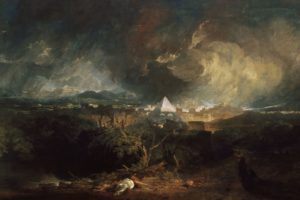In this week’s parasha, Shemot, God first reveals Himself to Moses. He introduces Himself thus: “I am the God of your forefathers; the God of Abraham, the God of Isaac, and the God of Jacob.” (Exodus 3:6) Later on in the conversation, Moses asks God how he should tell the Children of Israel about God, and what name should he use in referring to God? God replies that He is Ehyeh Asher Ehyeh, “I will be what I will be”. The simple meaning here is that God is trying to convey that He is not some idol or pagan deity. He has no shape or form; he has no location. He is everywhere and imbues everything. He is everything. He will be whatever He needs to be; wherever, whenever. Only after that introduction, God says:
Thus shall you say to the children of Israel: YHWH, the God of your fathers; the God of Abraham, the God of Isaac, and the God of Jacob, has sent me to you; this is My name for ever, and this is My memorial unto all generations. (Exodus 3:15)
God reveals His eternal name: YHWH (יהוה), a term so holy and powerful it is not uttered. It is referred to as God’s “Ineffable” Name, or just the Tetragrammaton (literally the “four-letter” name), and by Jews as Hashem (“The Name”), or Adonai (“My Lord”) in prayers or Torah readings. Some Jews refer to it by rearranging the letters and saying Havaya. (Some non-Jews have transliterated it into English as “Jehovah”.) Whatever the appellation, this name of God carries infinite depths of meaning. Several of these will be explored below. Continue reading

